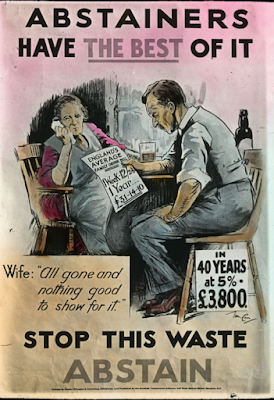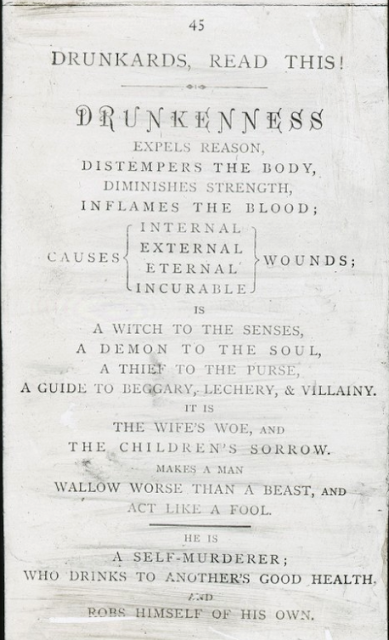Even in the Stacks
I occasionally read the Wall Street Journal because one of my sisters reads it regularly. I do so to be prepared when she says something like, “Guess what the idiots have done now?”; the ‘idiots’ being democrats, progressives, etc. And, in fact, much of what she tells me, and what the WSJ reports about those on the left having done or said, does seem often to be somewhat ‘idiotic.’
Or, perhaps it is better to describe some of the actions and words of the progressives as “Counterproductive.” I have noticed them occurring with more frequency lately and was thinking about constructing a “Counterproductive Index.” I noticed one article just the other day in, unsurprisingly, the WSJ, and was holding it with plans to perhaps make it the first item in the construction of my new index. I knew that the WSJ could be counted upon to continually provide examples of unsmart things done by the progressives. Things that often embarrass those of us who lean left and which are clearly counterproductive if one is interested in furthering the cause.
Those in the editorial room at the WSJ certainly lean right, but the paper is full of solid and well-reported stories. Still, I was holding this new article for a few days to see if it could possibly be true, since the action described in it is unsmart and likely to produce more ridicule from those who want to "own the libs", than progress for those who are attempting to change things. I wanted the first example in my forthcoming (maybe) CI to be a solid one.
In the title of the article a question is posed: “What Does a Library’s ‘Diversity Auditor’ Do?” (by Faith Bottum, Jan.20.) The answer is found at Bard College, which "recently announced that three undergraduates, funded by the Office of Inclusive Excellence, are working their way through Stevenson Library, "evaluating each book for representations of race/ethnicity, gender, religion, and ability." The conclusion easily reached, is that the stacks were to be culled and the old authors replaced with younger ones (differently coloured, ethnicized and gendered, etc.)
While "Decanonize the Stacks" or even "Decolonize the Stacks" is not nearly as upsetting to some as "Defund the Police," it bothered me. Although librarians at many universities are discarding books, it is usually done simply because the university administration thinks the space is better used as an area to entertain students. That librarians could be involved in getting rid of ‘bad’ books is troubling since they are usually enlisted to defend them.
I figured that even a WSJ article could go viral and that it would not take long for the conservative magazines and Fox News (not readily available up here) to call our attention to this one. Among other things, they would note the irony in the fact that school librarians and those on the left who wish to introduce young children to books to which parents object, are at least protecting their grown children from having access to books that make them feel unsafe.
Luckily for me, the first reaction I found to all of this, provides you with the information you need. You will find the original Bard Library newsletter which discusses the initiative to “decanonize’ the stacks.” I typed ‘original’ because apparently Bard backtracked a bit when all of this came to light. The WSJ article is also discussed and a critique of it all is offered.
Read this: Bard College Begins “decolonizing” its Library as Pecksniffs Comb the Stacks Searching for Bad Representations of “race/ethnicity, gender, religion, and ability”
Sources:
The WSJ article is cited in the post.
The Bard College website is here.
The critique is from: Why Evolution is True. The blogger is the author, Jerry A. Coyne, Emeritus Professor in the Department of Ecology and Evolution at the University of Chicago, whose website is here.
The Bonus:
The WSJ article mentioned that Loyola Marymount University in Los Angeles also “undertook a similar project.” Although I was not able to find a “project” there, I would not be surprised. This is from the LMU Library "DEIA Statement of Commitment":
Our vision for the William H. Hannon Library inspires us to create a brave and welcoming space for the students, faculty, and staff of Loyola Marymount University. For that goal to become fully manifest at LMU, we must commit ourselves to the principles of diversity, equity, inclusivity, and anti-racism (DEIA) in our collections, our spaces, our operations, and throughout all our work.
We recognize that structures of power and privilege remain largely in the hands of a few, and that we are part of a system, specifically academia, that perpetuates white supremacy. As librarians, information professionals, researchers, teachers, and practitioners, we aim to redress social and historical injustices through critical examinations of our operations, the development of diverse collections, the creation of inclusive spaces, and by centralizing the voices of historically oppressed and/or marginalized communities. These groups include, but are not limited to, Black, Indigenous, persons of color, LGBTQ+ people, and those with differing abilities, as well as those at the intersectionality of these communities.
Post Script:
As an aside, the DEIA people at LMU deserve some credit for creating a new "brave" space, since most other libraries are creating only "safe" ones.
As for the proposed "Counterproductive Index", I am thinking about using the British spelling and calling it the "Counter Productive Index", since CPI would increase traffic to this blog. My earlier creation, "The Human Suffering Index" (HSI), has failed to gain much attention, which is why I am shamelessly mentioning it here.
Those of you who wonder if enough Canadian counterproductive examples can be found to satisfy those who want more Canadian content, I think the answer is "Yes." Tentatively being considered is the "Widdowson Affair." The tenured Professor Widdowson was fired by a university that "unequivocally supports academic debate and will always defend the rights of faculty related to academic freedom." Ex-professor Widdowson has criticized the Black Lives Matter movement and attempted to Disrobe the Aboriginal Industry, so her prospects are dim. Still her firing is likely to be costly for the university and is counterproductive because it will serve to increase resentment and not help, at all, the cause for reconciliation.






























